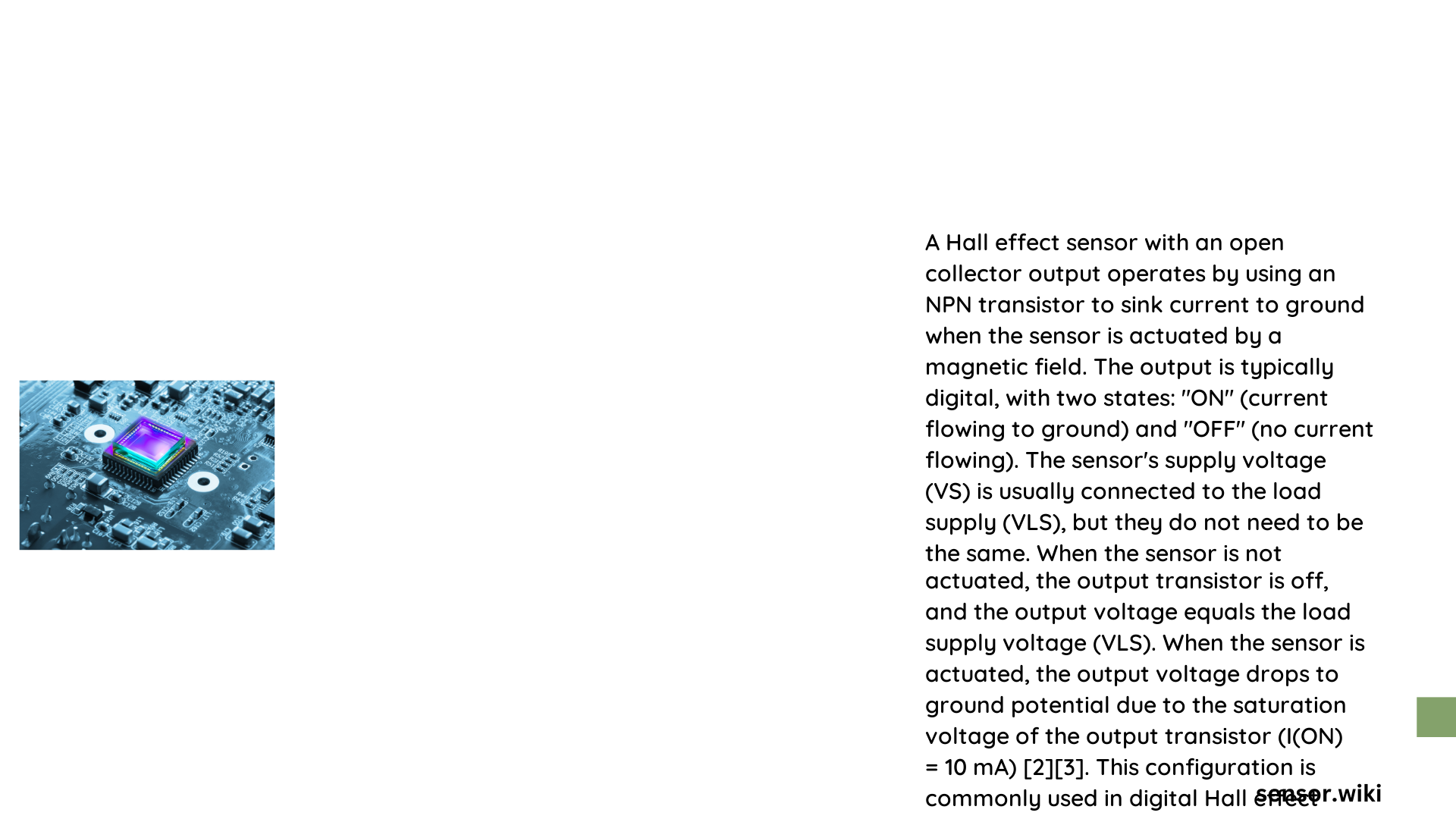Hall effect sensors with open collector output represent a sophisticated electronic sensing technology that enables precise, non-contact magnetic field detection across diverse industrial applications. These sensors leverage semiconductor principles to transform magnetic field variations into electrical signals, providing robust and flexible signal transmission through an open collector configuration that allows versatile interfacing with different electronic systems and voltage levels.
What Are Hall Effect Sensors with Open Collector Output?
Hall effect sensors with open collector output are specialized magnetic field sensing devices that generate electrical signals based on magnetic field interactions. Unlike traditional sensor outputs, the open collector configuration provides unique advantages in signal transmission and circuit integration.
Key Characteristics of Open Collector Output
| Parameter | Typical Range |
|---|---|
| Supply Voltage | 4.5V – 38V |
| Current Sinking Capability | 25-30 mA |
| Switching Frequency | DC – 200 kHz |
| Operating Temperature | -40°C to 125°C |
How Do Open Collector Hall Effect Sensors Work?

Open collector hall effect sensors operate through a semiconductor mechanism where:
- A magnetic field triggers the sensor’s internal transistor
- The transistor switches between conducting and non-conducting states
- External pull-up resistors complete the circuit configuration
- Signal transmission occurs through current sinking mechanism
Advantages of Open Collector Configuration
- Noise Immunity: Reduced susceptibility to external electrical interference
- Voltage Level Flexibility: Compatible with multiple voltage systems
- Cost-Effective Design: Simplified circuit implementation
- Wide Application Range: Suitable for industrial and consumer electronics
Where Are Open Collector Hall Effect Sensors Applied?
Open collector hall effect sensors find extensive applications across multiple domains:
- Industrial Automation: Machine safety monitoring
- Automotive Systems: Position and speed sensing
- Consumer Electronics: Non-contact switching operations
- Robotics: Proximity and movement detection
What Determines Sensor Performance?
Several critical factors influence open collector hall effect sensor performance:
- Magnetic Sensitivity: Determines detection accuracy
- Switching Speed: Impacts response time
- Current Handling: Defines load compatibility
- Temperature Stability: Ensures consistent operation
Practical Considerations for Implementation
When selecting an open collector hall effect sensor, engineers must evaluate:
- Required supply voltage range
- Maximum current sinking capability
- Switching frequency requirements
- Environmental operating conditions
Technical Specification Comparison
| Manufacturer | Voltage Range | Max Current | Switching Frequency |
|---|---|---|---|
| TT Electronics OHB3040S | 4.5V – 25V | 25 mA | 200 kHz |
| Texas Instruments DRV5023 | 2.5V – 38V | 30 mA | 180 kHz |
Best Practices for Open Collector Hall Effect Sensor Design
- Select appropriate pull-up resistor values
- Consider load current requirements
- Implement proper grounding techniques
- Evaluate environmental operating conditions
Conclusion
Hall effect sensors with open collector output provide a sophisticated, flexible solution for magnetic field sensing across diverse applications. Their unique configuration offers superior noise immunity, voltage compatibility, and robust performance.
Reference:
– TT Electronics Datasheet
– Texas Instruments DRV5023 Datasheet
– Hall Effect Sensing Application Guide
